Dodd, Martha Eccles, 08-10-1908, in Ashland, Virginia, United States  .to Ambassador in GHermany William Edward Dodd ( 1869–1940)
.to Ambassador in GHermany William Edward Dodd ( 1869–1940)  and his wife Martha Ida “Mattie, born Johns Dodd (1876–1938).
and his wife Martha Ida “Mattie, born Johns Dodd (1876–1938). 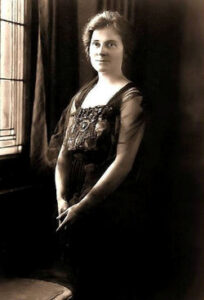 Martha had one brother, William Edward “Bill” Dodd Jr (1905–1952)
Martha had one brother, William Edward “Bill” Dodd Jr (1905–1952)



Martha Dodd, married George Bassett Roberts (1894-1986) 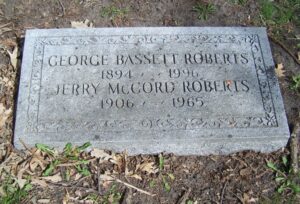 in 1932 in NYC and ended in divorce in 1934.and then in1938 she married Alfred Kaufman Stern (1897–1986)
in 1932 in NYC and ended in divorce in 1934.and then in1938 she married Alfred Kaufman Stern (1897–1986)
.  .
. .Martha studied at the University of Chicago
.Martha studied at the University of Chicago  and also for a time in Washington, D.C., and Paris. She served briefly as assistant literary editor of the Chicago Tribune.
and also for a time in Washington, D.C., and Paris. She served briefly as assistant literary editor of the Chicago Tribune.  In 1933, President Franklin D. Roosevelt
In 1933, President Franklin D. Roosevelt  appointed her father, the historian William Dodd, as the American ambassador to Germany and the Dodd family arrived in Berlin in August 1933. On 30-08-1933, Ambassador Dodd arrived at the Reichspräsidentenpalais
appointed her father, the historian William Dodd, as the American ambassador to Germany and the Dodd family arrived in Berlin in August 1933. On 30-08-1933, Ambassador Dodd arrived at the Reichspräsidentenpalais  to present his credentials to President Paul von Hindenburg
to present his credentials to President Paul von Hindenburg 
 as the ambassador of the United States to the German Reich, which were accepted.
as the ambassador of the United States to the German Reich, which were accepted.
Dodd and her brother, William E. Dodd, Jr., accompanied their parents to Berlin when her father took up the post of U.S. Ambassador. She initially found the Nazi movement  attractive. She later wrote that she “became temporarily an ardent defender of everything going on” and admired the “glowing and inspiring faith in Adolf Hitler,
attractive. She later wrote that she “became temporarily an ardent defender of everything going on” and admired the “glowing and inspiring faith in Adolf Hitler, 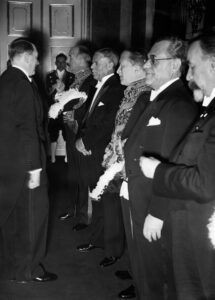 the good that was being done for the unemployed.” She made a number of friends in high circles, and Ernst “Putzi” Hanfstaengl,
the good that was being done for the unemployed.” She made a number of friends in high circles, and Ernst “Putzi” Hanfstaengl, 
 her sometime lover and an aide to Adolf Hitler, tried to encourage a romantic relationship between Hitler and Dodd. Dodd found Hitler “excessively gentle and modest in his manners”; no romance followed their meeting. She had numerous relationships while in Berlin, including with fighter ace, Ernst Udet
her sometime lover and an aide to Adolf Hitler, tried to encourage a romantic relationship between Hitler and Dodd. Dodd found Hitler “excessively gentle and modest in his manners”; no romance followed their meeting. She had numerous relationships while in Berlin, including with fighter ace, Ernst Udet 
 and with French diplomat Armand Berard,
and with French diplomat Armand Berard, 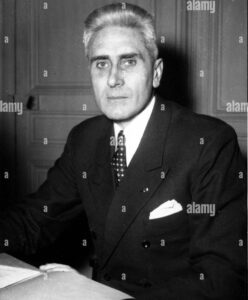 later France’s ambassador to the United Nations. Berard in a letter to her stated: “You are the only person in the world who can break me, but how well you know it and how you seem to rejoice in doing so. I can’t stand it. If you realized how unhappy I am, you would pity me”.
later France’s ambassador to the United Nations. Berard in a letter to her stated: “You are the only person in the world who can break me, but how well you know it and how you seem to rejoice in doing so. I can’t stand it. If you realized how unhappy I am, you would pity me”.
Other lovers included Max Ludwig Henning Delbrück 
 a German-born American physicist-turned-biologist, who received the international recognition after being awarded the 1969 Nobel Prize for Physiology or Medicine. and Martha’s lover the Leader Gestapo and an SS Oberführer Rudolf Diels.
a German-born American physicist-turned-biologist, who received the international recognition after being awarded the 1969 Nobel Prize for Physiology or Medicine. and Martha’s lover the Leader Gestapo and an SS Oberführer Rudolf Diels. 

 Dodd was greatly helped by the fact that both her parents went to bed early, and were unaware of her relationships. When the writer Thomas Wolfe
Dodd was greatly helped by the fact that both her parents went to bed early, and were unaware of her relationships. When the writer Thomas Wolfe  visited Berlin, he had a torrid romance with Dodd. Wolfe recalled that during his time in Berlin, Dodd was “like a butterfly hovering around my penis”. Several American diplomats at the embassy in Berlin reported to Washington that Martha Dodd’s relationships were the subject of much gossip in Berlin, and urged that Ambassador Dodd be recalled as his daughter’s behavior was damaging the image of the United States in the Reich. In September 1933, Martha Dodd first met a young Soviet diplomat, Boris Vinogradov,
visited Berlin, he had a torrid romance with Dodd. Wolfe recalled that during his time in Berlin, Dodd was “like a butterfly hovering around my penis”. Several American diplomats at the embassy in Berlin reported to Washington that Martha Dodd’s relationships were the subject of much gossip in Berlin, and urged that Ambassador Dodd be recalled as his daughter’s behavior was damaging the image of the United States in the Reich. In September 1933, Martha Dodd first met a young Soviet diplomat, Boris Vinogradov,  at a dance in Berlin. Dodd later recalled: “Incredible as it sounds, I had the sensation after he left that air around me was more luminous and vibrant”..
at a dance in Berlin. Dodd later recalled: “Incredible as it sounds, I had the sensation after he left that air around me was more luminous and vibrant”..
Following the Night of the Long Knives, 30 June to 2 July 1934 (three days), where Hitler ordered the murder of his SA competitors, as AS leader Ernst Julius Röhm 
 Dodd changed her views on the Nazis. People in her social circle were begging the Americans for help and the Dodd family found its phones tapped and their servants enlisted as spies. Her mother wrote that Dodd “got into a nervous state that almost bordered on the hysterical [and] had terrible nightmares”.
Dodd changed her views on the Nazis. People in her social circle were begging the Americans for help and the Dodd family found its phones tapped and their servants enlisted as spies. Her mother wrote that Dodd “got into a nervous state that almost bordered on the hysterical [and] had terrible nightmares”.
In March 1934, the NKVD (People’s Commissariat for Internal Affairs) ordered intelligence officer Boris Vinogradov (under diplomatic cover in Berlin as press attache) to recruit his lover, Dodd, as an agent. In 1935, Marguerite Young interviewed Dodd’s father, at his request, for the CPUSA-controlled Daily Worker, agreeing to meet Young because she already knew Martha. Young wrote of Dodd, “his daughter, whom I’d met and liked, an attractive young woman, light yellow hair, large black velvet bow at the nape of her neck.”
Vinogradov and Dodd began a romantic relationship that lasted for years, even after he left Berlin; in 1936 they asked Joseph Stalin  for permission to marry. Dodd agreed to spy for the Soviet Union. Other case officers soon replaced Vinogradov and Dodd worked with each of them while hoping to reconnect with Vinogradov. (Vinogradov was executed in approximately 1938, during the Great Purge.
for permission to marry. Dodd agreed to spy for the Soviet Union. Other case officers soon replaced Vinogradov and Dodd worked with each of them while hoping to reconnect with Vinogradov. (Vinogradov was executed in approximately 1938, during the Great Purge.  The Great Terror of 1937, also known as the Great Purge, was a brutal political campaign led by Soviet dictator Joseph Stalin to eliminate dissenting members of the Communist Party and anyone else he considered a threat. Although estimates vary, most experts believe at least 750,000 people were executed during the Great Terror, which started around 1936 and ended in 1938.
The Great Terror of 1937, also known as the Great Purge, was a brutal political campaign led by Soviet dictator Joseph Stalin to eliminate dissenting members of the Communist Party and anyone else he considered a threat. Although estimates vary, most experts believe at least 750,000 people were executed during the Great Terror, which started around 1936 and ended in 1938.
Dodd informed the Soviets of secret embassy and State Department business and provided details of her father’s reports to the State Department. As part of her cover, she maintained a romantic relationship with the second son of Crown Prince Wilhelm of Prussia Louis Ferdinand  . Anticipating her father’s retirement from his Berlin post, she tried to learn the Soviet’s preferred replacement for him as U.S. Ambassador and told the NKVD leadership, “If this man has at least a slight chance, I will persuade my father to promote his candidacy.” After the Dodds left Germany in December, 1937, Iskhak Abdulovich Akhmerov,
. Anticipating her father’s retirement from his Berlin post, she tried to learn the Soviet’s preferred replacement for him as U.S. Ambassador and told the NKVD leadership, “If this man has at least a slight chance, I will persuade my father to promote his candidacy.” After the Dodds left Germany in December, 1937, Iskhak Abdulovich Akhmerov,  NKVD rezident in New York City, managed her espionage work.
NKVD rezident in New York City, managed her espionage work.
In Summer 1938, while still romantically involved with the filmmaker Sidney Kaufman,  with whom she lived for several months, Dodd married New York millionaire Alfred Kaufman
with whom she lived for several months, Dodd married New York millionaire Alfred Kaufman
Stern Jr. 

 According to Dodd, Stern was prepared to contribute $50,000 to the Democratic Party to secure an ambassadorship. The Soviets viewed Dodd as a valuable but uncertain asset. One assessment was, “A gifted, clever and educated woman, she requires constant control over her behavior.” Another assessment was, “She considers herself a Communist and claims to accept the party’s program. In reality [she] is a typical representative of American bohemia, a sexually decayed woman ready to sleep with any handsome man.” In a 05-02-1942, letter, Dodd told her Soviet contacts that her husband should be brought into their network. With their approval, she approached her husband and reported that he responded with enthusiasm: “He wanted to do something immediately. He felt he had many contacts that could be valuable in this sort of work.” Stern established a music publishing house that served as a cover for routing information to the Soviet Union. Dodd and Stern proved of little value to the Soviets beyond providing the publishing house cover and occasionally recommending someone as a potential agent. As part of the Soble spy ring, Miss Dodd (code named Liza) recommended Jane Foster to infiltrate the OSS.
According to Dodd, Stern was prepared to contribute $50,000 to the Democratic Party to secure an ambassadorship. The Soviets viewed Dodd as a valuable but uncertain asset. One assessment was, “A gifted, clever and educated woman, she requires constant control over her behavior.” Another assessment was, “She considers herself a Communist and claims to accept the party’s program. In reality [she] is a typical representative of American bohemia, a sexually decayed woman ready to sleep with any handsome man.” In a 05-02-1942, letter, Dodd told her Soviet contacts that her husband should be brought into their network. With their approval, she approached her husband and reported that he responded with enthusiasm: “He wanted to do something immediately. He felt he had many contacts that could be valuable in this sort of work.” Stern established a music publishing house that served as a cover for routing information to the Soviet Union. Dodd and Stern proved of little value to the Soviets beyond providing the publishing house cover and occasionally recommending someone as a potential agent. As part of the Soble spy ring, Miss Dodd (code named Liza) recommended Jane Foster to infiltrate the OSS.
In 1939, Dodd published a memoir of her years in Berlin, Through Embassy Eyes.  It included extravagant praise of the Soviet Union based in her travels there. With her brother as co-editor, she published her father’s Berlin diaries, Ambassador Dodd’s Diary, 1933–1938.
It included extravagant praise of the Soviet Union based in her travels there. With her brother as co-editor, she published her father’s Berlin diaries, Ambassador Dodd’s Diary, 1933–1938. 
Her 1945 novel, Sowing the Wind, described the moral deterioration of decent Germans under Adolf Hitler. 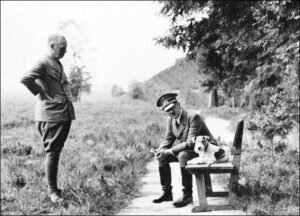 It was “not much esteemed as a work of fiction,” but became a best-seller in translation in the Soviet sector of Berlin in 1949.
It was “not much esteemed as a work of fiction,” but became a best-seller in translation in the Soviet sector of Berlin in 1949.
The FBI had Dodd under surveillance by 1948. Contacts between Dodd and Stern and NKGB lapsed in 1949.[42] In 1955, Dodd published The Searching Light,  a defense of academic freedom that told the story of a professor under pressure to sign a loyalty oath.
a defense of academic freedom that told the story of a professor under pressure to sign a loyalty oath.
In July 1956, subpoenaed to testify in several espionage cases, Dodd and Stern fled to Prague via Mexico with their nine-year-old adopted son Robert. They later applied for and were denied Soviet citizenship. Boris Morros  implicated Dodd and Stern in 1957 as Soviet agents as part of his exposure of the Soble spy network. The Soviets then allowed them to emigrate to Moscow just as they were convicted of espionage by a U.S. court.
implicated Dodd and Stern in 1957 as Soviet agents as part of his exposure of the Soble spy network. The Soviets then allowed them to emigrate to Moscow just as they were convicted of espionage by a U.S. court.
A KGB document, dated October 1975, noted that the Sterns spent 1963–1970 in Cuba. In the 1970s, apparently disappointed with their lives in the Soviet Union, they tried without success to have their American attorney negotiate their return to the U.S. The KGB / Committee for State Security ![]() monitored the negotiations and had no objections, since their knowledge of espionage activities was outdated or had been revealed by Morros.
monitored the negotiations and had no objections, since their knowledge of espionage activities was outdated or had been revealed by Morros.
Death and burial ground of Dodd, Martha Eccles, Stern.

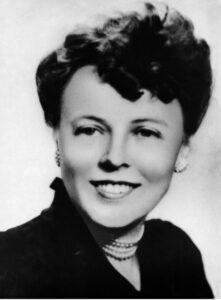


In 1979, the U.S. Department of Justice dropped charges against Dodd and her husband related to the Soble case. Alfred Stern died of cancer on 24-06-1986, in Prague: Martha Dodd age 81, died on 10-08-1990, in Prague. and is buried at the Rock Creek Cemetery, Washington, District of Columbia, District of Columbia, USA. Section: L, Lot: 37, Grave: 2. 201 Allison St NW, Washington, DC 20011,

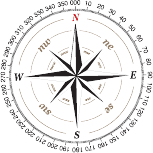















Leave a Reply